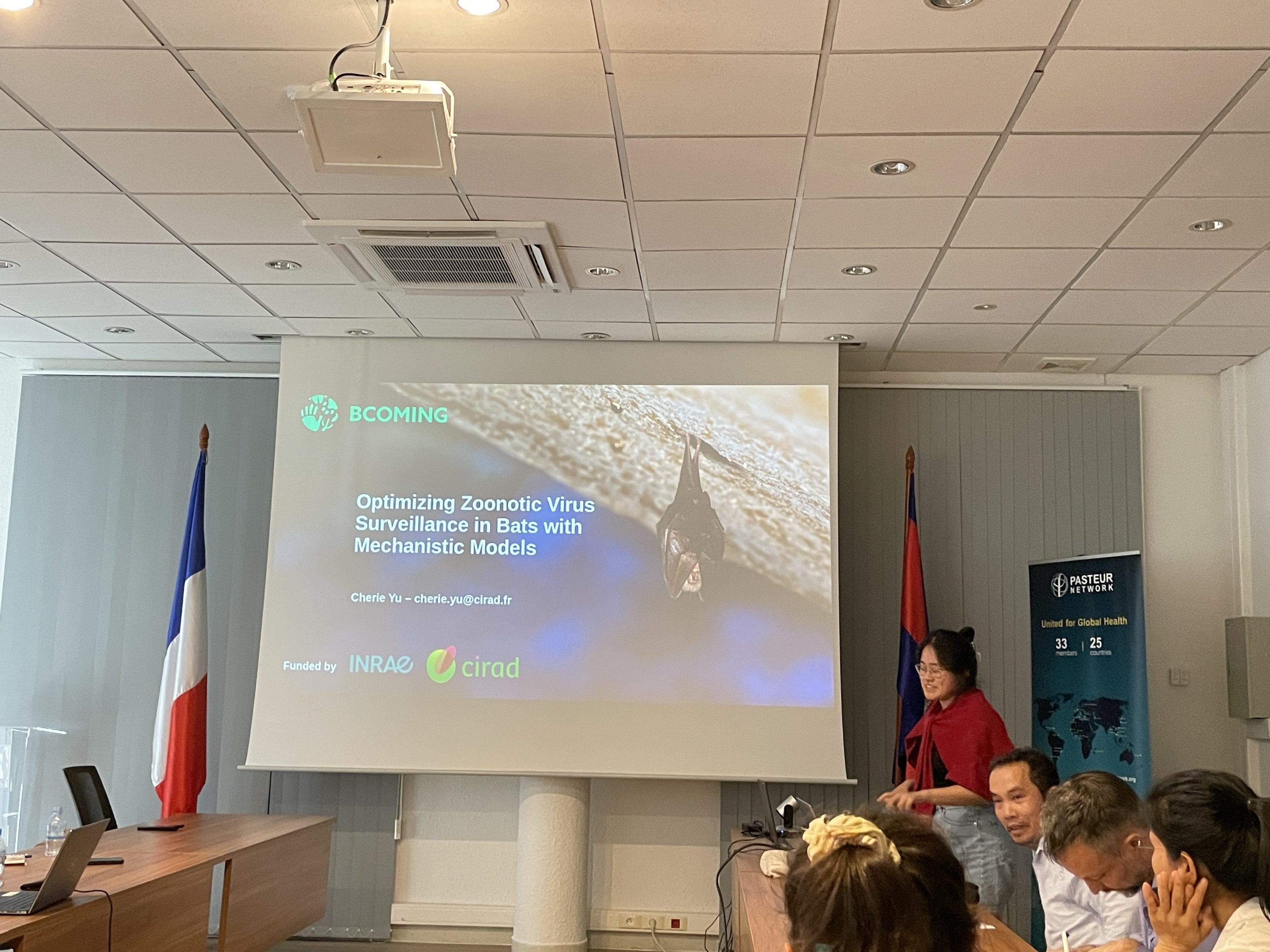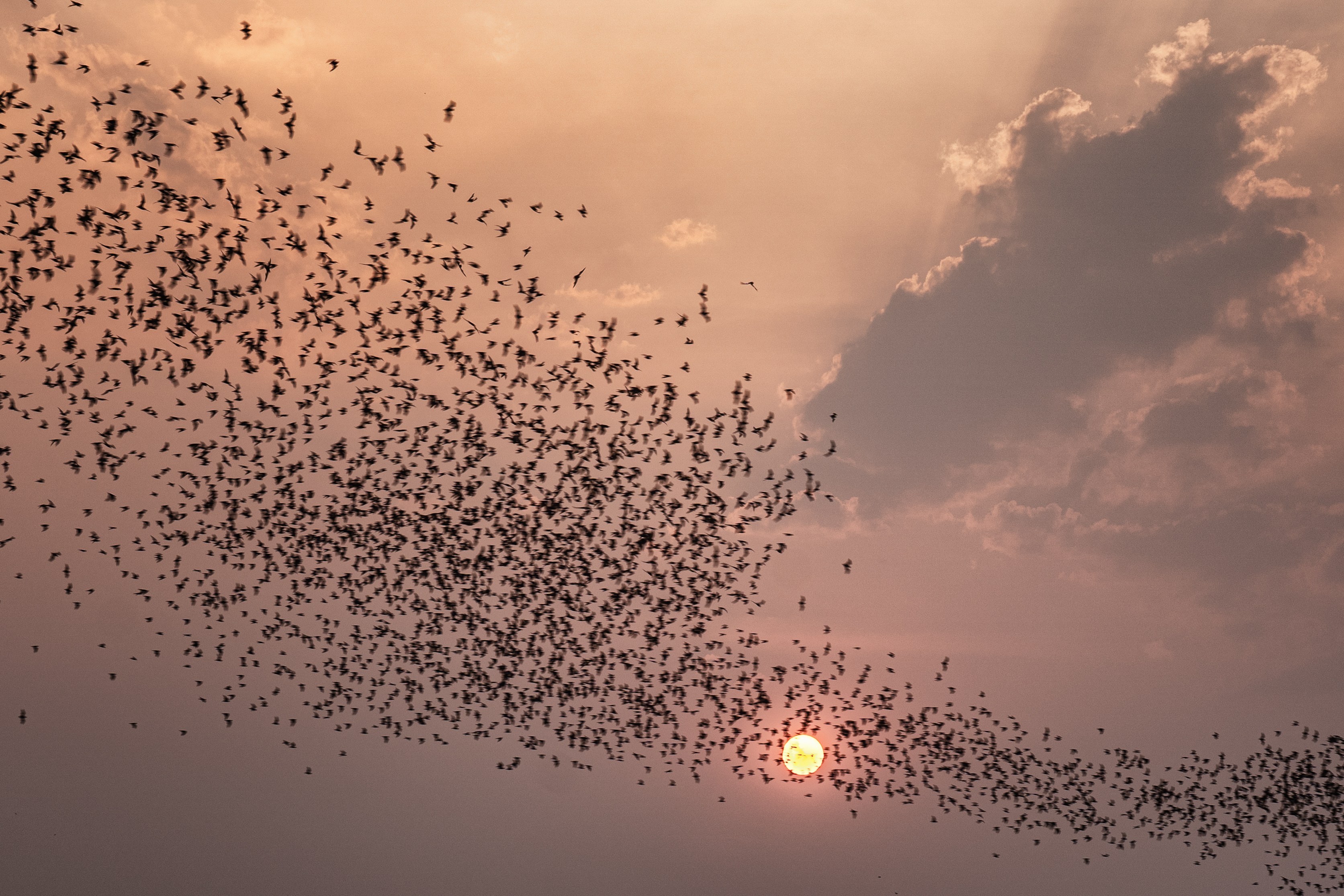Journey to Cambodia (2/3)
Day 2 - Cherie's findings on optimising zoonotic virus surveillance in bats
On the 12th of December (2023), Cherie presented the findings of her first year's research on optimising zoonotic virus surveillance in bats with mechanistic models. For this, she used data collected by Julien and his team over four years in collaboration with IPC. Recognising the potential transmission of various viruses from bats to humans, Cherie emphasised the importance of bat surveillance.
Cherie introduced different methods of bat sampling to gather data, including invasive techniques such as rectal swabs, saliva swabs, and blood sampling, which are costly and labour-intensive. In contrast, non-invasive techniques such as guano collection are more cost-effective but provide less data.
It's essential to find a methodology for surveillance that maximises results and minimises costs. This is where models come into the picture. Cherie's Ph.D. focuses on mechanistic compartmental models that describe processes over time using mathematical relationships. Models can be calibrated to field data using Bayesian techniques. Outputs can include uncertainty estimates in biological parameters and trajectories.

Fig.1: Cherie Yu presents her findings
One of the key questions is whether the seasonality in bat reproduction can predict the dynamics of coronaviruses. Existing research suggests that the dynamics of bat-borne viruses are significantly influenced by bat ecology. Reports indicate that there is seasonal viral shedding and infection among bats. Synchronised births in bats create favourable conditions for viral transmission, as the influx of naïve juveniles amplifies circulation, and the waning of maternal antibodies contributes to an infectious peak.
Cherie will continue fine-tuning her model, and as the results from the BCOMING project become available, she will integrate them into the model.




